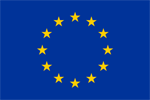E-learning in the Time of COVID-19
Scientific Editor Eugenia Smyrnova-Trybulska
“E-learning”, 13, Katowice–Cieszyn 2021, pp. 199–209
https://doi.org/10.34916/el.2021.13.17
THE TEMPLATES METHODS IN E-LEARNING OF HIGHER MATHEMATICS
Dmytro Bodnenko 1, Oksana Lytvyn 2, Sergiy Radchenko 3, & Volodymyr Proshkin 4
Borys Grinchenko Kyiv University, Bulvarno-Kudriavska St. 18/2, Kyiv, Ukraine
1 d.bodnenko@kubg.edu.ua, ORCID 0000-0001-9303-6587
2 o.lytvyn@kubg.edu.ua, ORCID 0000-0002-5118-1003
3 s.radchenko@kubg.edu.ua, ORCID 0000-0002-6930-5801
4 v.proshkin@kubg.edu.ua, ORCID 0000-0002-9785-0612
Abstract: The article considers the peculiarities of the implementation of the templates method in the process of e-learning of higher mathematics for automated generation and visualization of tasks using cloud services. It reveals the essence of the templates method; its advantages as a real and accessible method of automating the creation and use of packages of practical mathematical tasks, and also their visualization. A survey conducted among students sproved the convenience and efficiency of using the method of templates in the process of teaching higher mathematics. The authors discuss features and methodological aspects of the implementation of the templates method using Google Sheet and Overleaf cloud services in the process of e-learning of higher mathematics. The authors present the algorithm of the organization of e-learning of students with use of templates consisting of two stages and highlight the advantages of cloud services in the implementation of the template method in the process of teaching higher mathematics. They include an operational reflection, a comparative analysis of work performed, etc.
Keywords: template method; educational process; e-learning; higher mathematics; cloud services.
REFERENCES
A b e, K., C o r t e z, R., & Va z h e n i n, A. (2013). Task management strategies for automatic task generation and verification. International Joint Conference On Awareness Science And Technology & Ubi-Media Computing (Icast 2013 & UMEDIA 2013). https://doi.org/ 10.1109/icawst.2013.6765510.
B e l s h a w, D. (2014). The essential elements of digital literacies. Retrieved from https://doug- belshaw.com/doug-belshaw-edd-thesis-final.pdf (accessed 1 June 2021).
B o d n e n k o, D., R a d c h e n k o, S., & J u r t i n, I. (2015). The Usage of Illustration for Materi- al Perception Improvement in Studying Natural Disciplines. SOCIETY, INTEGRATION, EDUCATION. Proceedings Of The International Scientific Conference, 1, 356. https://doi. org/10.17770/sie2014vol1.776.
B y z o v, V. (2018). O opyite ispolzovaniya PYTHON i LATEX dlya avtomaticheskoy generat- sii kontrolnyih rabot po matematike [About the experience of using PYTHON and LATEX for automatic generation of test papers in mathematics]. Nauchnyiy Vzglyad V Buduschee. [Scientific Outlook to the Future] (19-01), 39–43. https://doi.org/10.30888/2415-7538.2020-19-01-011.
G a n g u r, M. (2011, July). Automatic generation of mathematic tasks. In Proceedings of the 7th WSEAS/IASME International Conference on Educational Technologies (EDUTE’11) (pp. 129–134).
K o n o v a l o v, Ya.Yu. & S o b o l e v, S.K. (2016). Metodicheskie aspektyi kompyuternogo generirovaniya zadaniy po matematike. [Methodological aspects of computer genera- tion of tasks in mathematics]. Mashinostroenie i kompyuternyie tehnologii. [Mechani- cal Engineering and Computer Technologies] (7). Retrieved from https://cyberleninka.ru/ article/n/metodicheskie-aspekty-kompyuternogo-generirovaniya-zadaniy-po-matema- tike (accessed 11 June 2021).
N g u y e n, M. L., H u i, S.C., & F o n g, A.C. (2012, September). Web-based mathematics test- ing with automatic assessment. In Pacific Rim International Conference on Artificial In- telligence (pp. 347–358). Springer, Berlin, Heidelberg. https://doi.org/10.1007/978-3-642-32695-0_32.
R a d c h e n k o, S. (2018). Pobudova za metodom shabloniv kompiuteryzovanoho seredovy- shcha dlia vyvchennia system liniinykh alhebraichnykh rivnian. [Construction using a computerized environment method for studying systems of linear algebraic equations]. Naukovyi Chasopys NPU Imeni M.P. Drahomanova. Seriia 2. Kompiuterno-Oriientova- ni Systemy Navchannia [Scientific Journal of NPU named after. Series 2. Computer-Oriented Learning Systems], 20(27), 107–113. https://doi.org/10.31392/npu-nc.series2.2018. 20(27).18.
R a d c h e n k o, S. (2019). Formuvannia za metodom shabloniv skhem heneruvannia zavdan dlia vyvchennia dyskretnykh vypadkovykh velychyn. [Formation by the method of templates of schemes of generation of tasks for studying of discrete random variables]. Naukovyi Chasopys NPU Imeni M.P. Drahomanova. Seriia 2. Kompiuterno-Oriientovani Systemy Navchannia [Scientific Journal of NPU named after. Series 2. Computer-Oriented Learning Systems], 21(28), 117–121. https://doi.org/10.31392/npu-nc.series2.2019.21(28).19.
S i u C h e u n g H u i, N g u y e n, M., & F o n g, A. (2013). Large-Scale Multiobjective Static Test Generation for Web-Based Testing with Integer Programming. IEEE Transactions On Learning Technologies, 6(1), 46–59. https://doi.org/10.1109/tlt.2012.22.
S e m e n i k h i n a, O., K u d r i n a, O., K o r i a k i n, O., P o n o m a r e n k o, L., K o r i n n a, H., & K r a s i l o v, A. (2020). The Formation of Skills to Visualize by the Tools of Computer Visualization. TEM Journal, 1704–1710. https://doi.org/10.18421/tem94-51.
S i n g h, R., G u l w a n i, S., & R a j a m a n i, S. (2012, July). Automatically generating algebra problems. In Proceedings of the AAAI Conference on Artificial Intelligence (Vol. 26, No. 1).
Vo l l r a t h, J. (2015, March). An open access minimum automatic task generation live feed- back system for electrical engineering. In 2015 IEEE Global Engineering Education Con- ference (EDUCON) (pp. 494–498). https://doi.org/10.1109/educon.2015.7096015.





